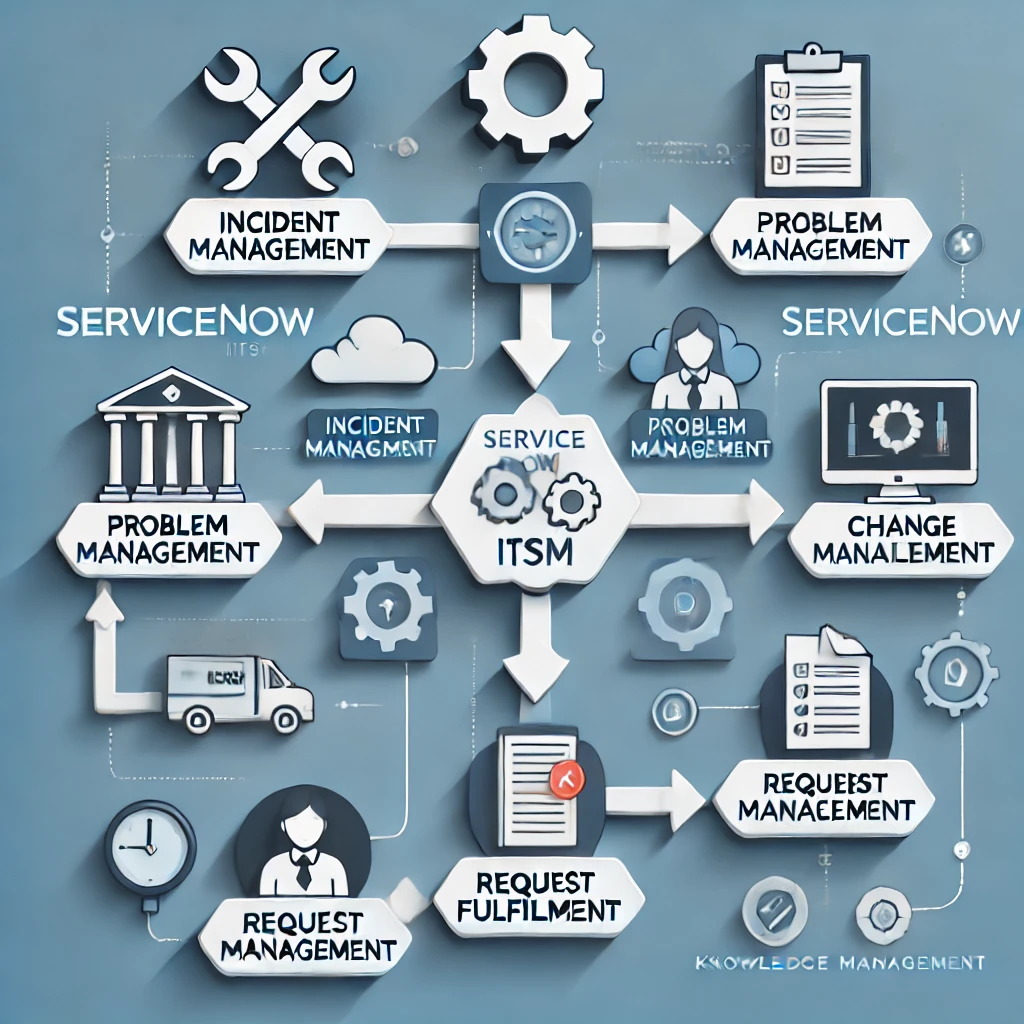
ServiceNow ITSM Modules Explained: Your Comprehensive Guide
Introduction to ServiceNow ITSM Modules
ServiceNow ITSM (IT Service Management) is a powerful platform designed to streamline IT operations, improve efficiency, and deliver better user experiences. At the core of ServiceNow’s ITSM capabilities are its specialized modules. These modules work together seamlessly to help organizations manage incidents, requests, changes, problems, assets, and more.
In this article, we’ll provide an in-depth exploration of the key ServiceNow ITSM modules, how they function, and the value they bring to IT service management.
Keep us going with the cost of a cup of coffee—it’s a small gesture that brews big impact!
Affiliate Disclosure
This article may contain affiliate links, which means we may earn a commission if you make a purchase or sign up for a service through one of our links. This comes at no additional cost to you and helps support the maintenance and creation of valuable content on this website.
We only recommend products and services that we genuinely believe will bring value to our readers. Our opinions and recommendations are unbiased and based on thorough research and expertise. Thank you for supporting us!
Table of Contents
- Incident Management Module
- Problem Management Module
- Change Management Module
- Request Management Module
- Knowledge Management Module
- Configuration Management Database (CMDB)
- Benefits of Using ServiceNow ITSM Modules
1. Incident Management Module
The Incident Management module in ServiceNow ITSM ensures quick resolution of IT issues while minimizing service disruptions. It centralizes incident handling, enabling IT teams to manage tickets efficiently.
Key Features
- Automated Ticket Prioritization: Incidents are automatically categorized and prioritized based on impact and urgency.
- Real-Time Collaboration: Facilitates communication across IT teams to speed up resolutions.
- Service-Level Agreements (SLAs): Ensures compliance with pre-defined resolution times.
Benefits
- Reduces response times.
- Improves end-user satisfaction with faster resolutions.
- Prevents escalation of minor issues into major outages.
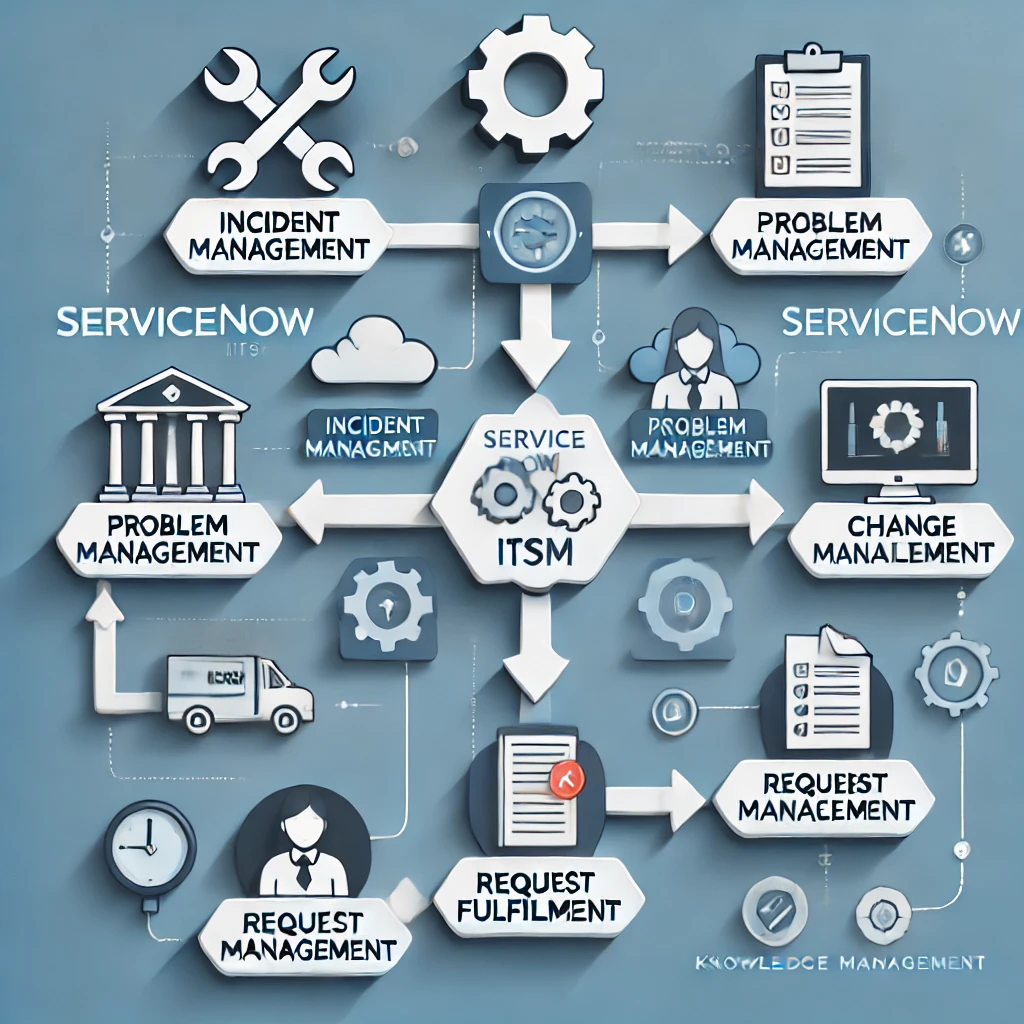
2. Problem Management Module
Problem Management focuses on identifying and addressing the root causes of recurring incidents to prevent future issues.
Key Features
- Root Cause Analysis (RCA): Tools to investigate and pinpoint the origin of problems.
- Workaround Documentation: Provides temporary solutions to reduce the impact of unresolved problems.
- Proactive Problem Detection: Identifies potential problems before they impact users.
Benefits
- Minimizes recurring incidents.
- Improves system reliability and uptime.
- Reduces operational costs by resolving underlying issues.
3. Change Management Module
Change Management helps organizations manage IT changes systematically to reduce risks and avoid service disruptions.
Key Features
- Automated Approvals: Streamlines the approval process with pre-configured workflows.
- Risk Assessment: Tools to evaluate the potential impact of changes.
- Change Calendar: Provides visibility into scheduled changes to avoid conflicts.
Benefits
- Reduces the risk of failed changes.
- Improves visibility and accountability during IT transitions.
- Ensures smooth implementation of IT changes with minimal downtime.
4. Request Management Module
Request Management simplifies the handling of user service requests, ensuring they are fulfilled promptly and efficiently.
Key Features
- Self-Service Portals: Allows users to submit and track requests online.
- Service Catalog: Predefined templates for common requests such as software installations or access permissions.
- Automated Fulfillment: Assigns requests to the right team or individual automatically.
Benefits
- Enhances user satisfaction through quicker service delivery.
- Reduces the workload on IT staff with automation.
- Provides visibility into request status and fulfillment timelines.
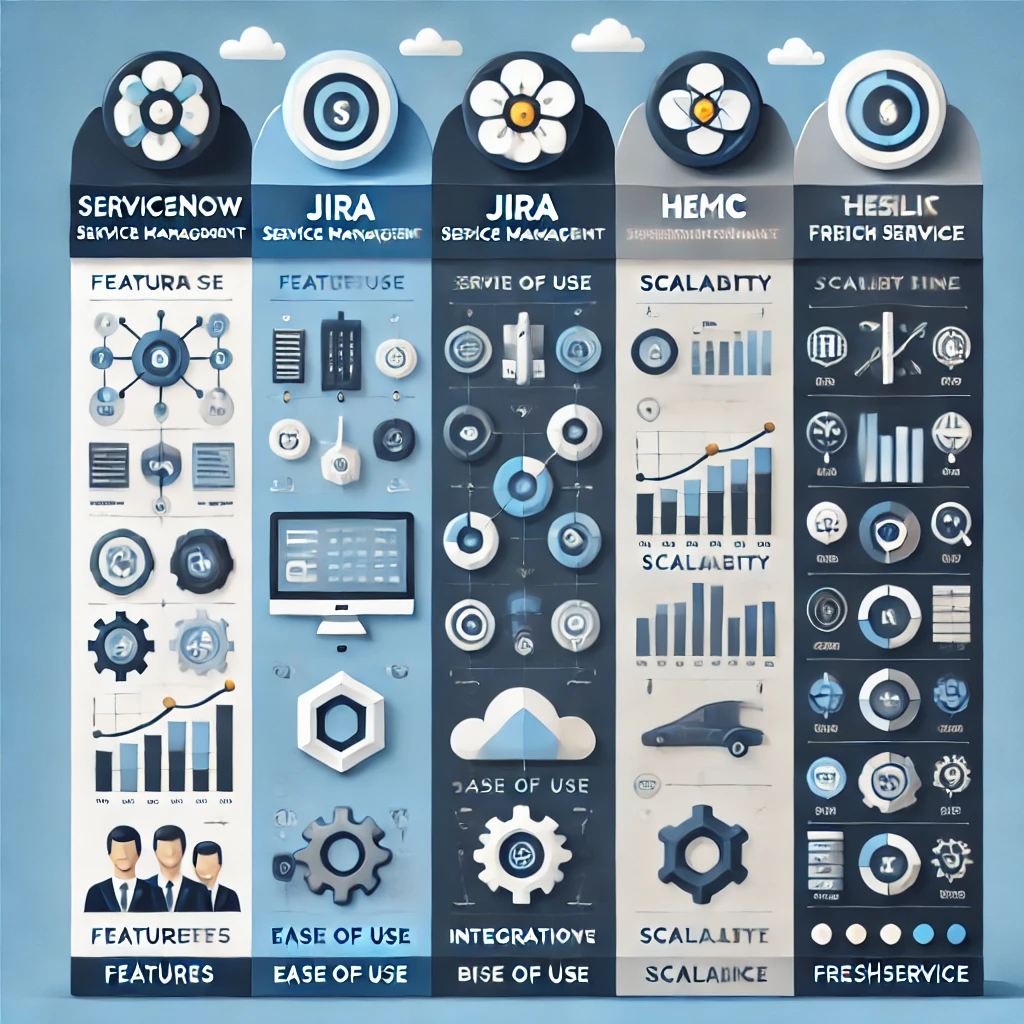
5. Knowledge Management Module
The Knowledge Management module enables organizations to create, share, and manage IT documentation effectively.
Key Features
- Centralized Knowledge Base: A repository for FAQs, troubleshooting guides, and technical documentation.
- AI-Powered Search: Ensures users find relevant information quickly.
- Feedback Mechanism: Users can rate and comment on knowledge articles to improve content quality.
Benefits
- Empowers users with self-help resources.
- Reduces the number of tickets submitted to IT teams.
- Enhances consistency in IT operations with standardized documentation.
6. Configuration Management Database (CMDB)
The CMDB is a critical component of ServiceNow ITSM, providing a single source of truth for all IT assets and their relationships.
Key Features
- Asset and Dependency Mapping: Tracks hardware, software, and their interdependencies.
- Integration Capabilities: Syncs with monitoring tools and other IT systems.
- Visualization Tools: Helps IT teams understand service impacts through dependency diagrams.
Benefits
- Improves change and incident management with accurate asset data.
- Reduces downtime by understanding dependencies.
- Supports strategic IT decision-making.
7. Benefits of Using ServiceNow ITSM Modules
Using ServiceNow’s ITSM modules offers a range of benefits that transform IT operations:
1. Streamlined Operations
The integration of modules ensures seamless data flow and eliminates silos, improving operational efficiency.
2. Improved User Satisfaction
Features like self-service portals and faster resolutions enhance user experiences.
3. Cost Savings
Automation and proactive problem management reduce operational costs by minimizing manual efforts and service disruptions.
4. Scalability
ServiceNow’s modular design allows organizations to scale their ITSM capabilities as they grow.
5. Data-Driven Insights
Real-time analytics and dashboards provide actionable insights for informed decision-making.
Conclusion
ServiceNow ITSM modules are designed to address every aspect of IT service management, from handling incidents and problems to managing changes and assets. By leveraging these modules effectively, organizations can enhance operational efficiency, reduce costs, and deliver superior user experiences.
Whether you’re starting your ITSM journey or looking to upgrade your existing processes, ServiceNow’s modular approach offers the flexibility and functionality you need to succeed.
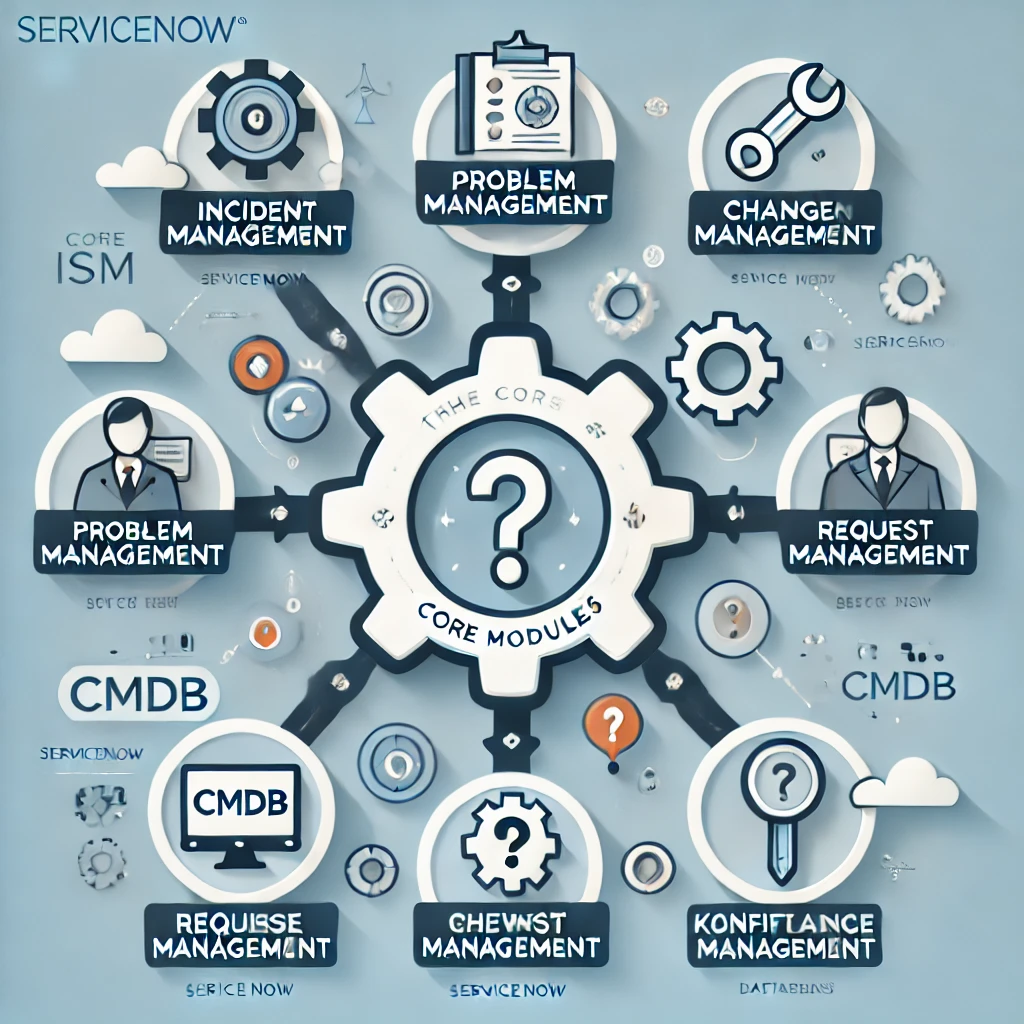
Comparing ServiceNow ITSM with Other ITSM Tools
Introduction
ServiceNow ITSM (IT Service Management) is one of the most widely adopted platforms for managing IT operations, but how does it compare to other ITSM tools in the market? Tools like Jira Service Management, BMC Helix, and Freshservice each offer their own unique strengths and weaknesses.
This article provides an in-depth comparison of ServiceNow ITSM with these popular alternatives, focusing on key areas such as features, scalability, ease of use, and pricing.
Key Criteria for Comparison
To evaluate ServiceNow ITSM against other tools, we’ll analyze the following:
- Core Features
- Ease of Use
- Integration Capabilities
- Scalability
- Pricing
- Customer Support
ServiceNow ITSM vs. Jira Service Management
1. Core Features
- ServiceNow ITSM: Offers advanced modules like Incident Management, Problem Management, Change Management, and a powerful CMDB (Configuration Management Database). These features are ideal for enterprise-level IT service management.
- Jira Service Management: Focused on agile teams, Jira provides robust ticketing, change request workflows, and integration with development tools like Jira Software.
2. Ease of Use
- ServiceNow: Known for its comprehensive features, but the complexity can result in a steeper learning curve for new users.
- Jira: Simpler interface tailored for DevOps teams, making it easier for agile workflows.
3. Integration Capabilities
- ServiceNow: Integrates with a wide range of enterprise tools, including monitoring systems and CRM platforms.
- Jira: Excellent integration with Atlassian’s suite (Confluence, Bitbucket), but more limited outside its ecosystem.
4. Scalability
- ServiceNow: Highly scalable for large organizations with complex needs.
- Jira: Better suited for small to medium-sized teams.
5. Pricing
- ServiceNow: Premium pricing aimed at enterprises.
- Jira: More affordable for small and growing teams.
Verdict
ServiceNow is ideal for enterprises with complex IT environments, while Jira excels for DevOps-oriented teams focused on agile workflows.
ServiceNow ITSM vs. BMC Helix
1. Core Features
- ServiceNow ITSM: Comprehensive ITSM suite covering incident, problem, change, and asset management, powered by automation and AI.
- BMC Helix: Offers similar ITSM capabilities with a strong focus on ITIL alignment and cloud-based service delivery.
2. Ease of Use
- ServiceNow: Offers a modern, feature-rich interface but requires significant training.
- BMC Helix: Has an intuitive interface with a focus on quick deployment and configuration.
3. Integration Capabilities
- ServiceNow: Provides extensive integrations with third-party tools.
- BMC Helix: Offers out-of-the-box integrations, but the range is narrower than ServiceNow.
4. Scalability
- Both platforms are highly scalable, making them suitable for enterprises of any size.
5. Pricing
- ServiceNow: Higher cost but offers extensive customization and scalability.
- BMC Helix: Competitive pricing for similar capabilities.
Verdict
Both platforms cater to enterprises, but ServiceNow edges ahead with its flexibility and deeper integration options, while BMC Helix offers a slightly more cost-effective alternative.
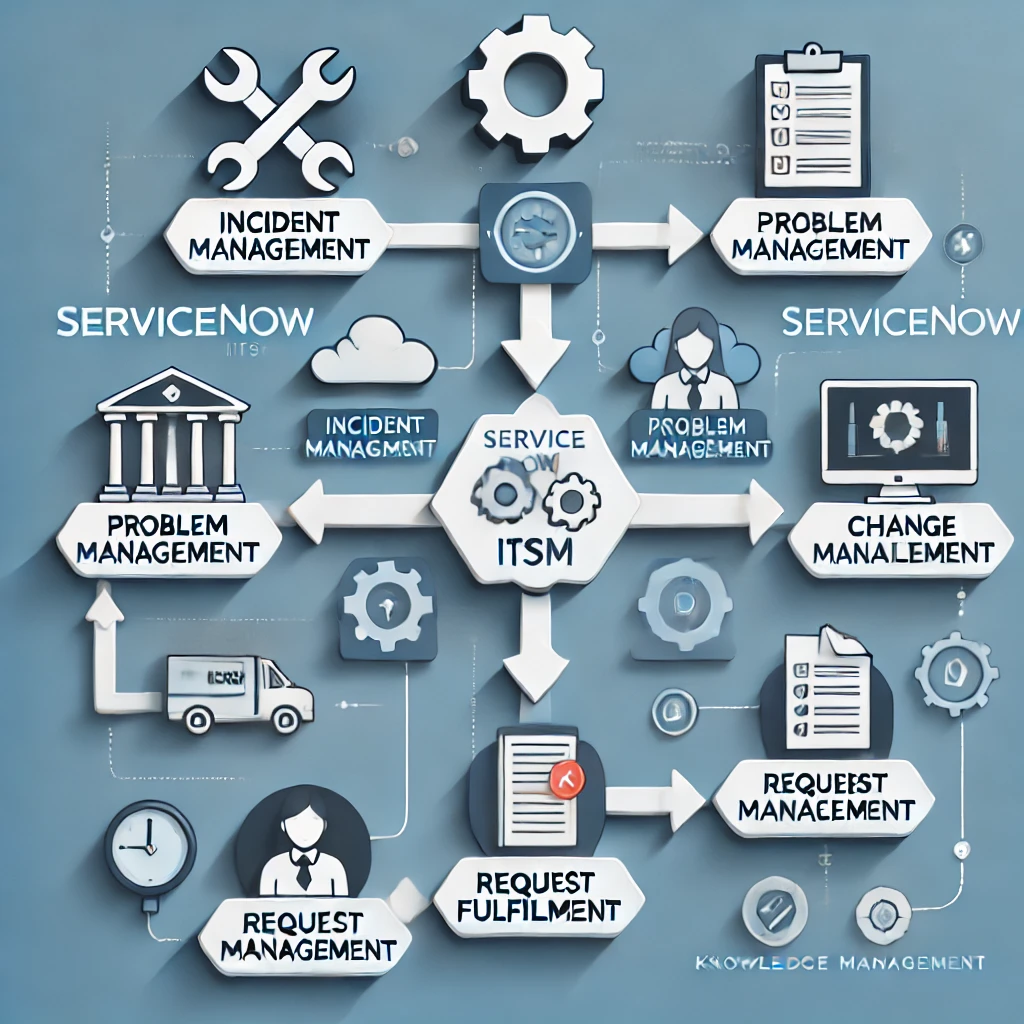
ServiceNow ITSM vs. Freshservice
1. Core Features
- ServiceNow ITSM: A full-fledged ITSM platform with AI-driven automation, analytics, and a robust CMDB.
- Freshservice: Simplified ITSM tool focusing on ease of use and essential features like incident and problem management.
2. Ease of Use
- ServiceNow: More complex, requiring specialized knowledge for setup and maintenance.
- Freshservice: Extremely user-friendly, making it suitable for small to medium-sized businesses (SMBs).
3. Integration Capabilities
- ServiceNow: Supports enterprise-level integrations.
- Freshservice: Integrates with popular tools but is limited compared to ServiceNow.
4. Scalability
- ServiceNow: Designed for enterprises and capable of handling complex IT environments.
- Freshservice: Works best for smaller teams and simpler IT operations.
5. Pricing
- ServiceNow: Higher cost due to its enterprise-grade features.
- Freshservice: Affordable pricing plans suitable for SMBs.
Verdict
Freshservice is an excellent choice for smaller organizations looking for simplicity and affordability, while ServiceNow is better suited for enterprises requiring advanced ITSM capabilities.
Conclusion
When choosing between ServiceNow ITSM and other ITSM tools like Jira Service Management, BMC Helix, and Freshservice, it’s important to consider your organization’s size, budget, and specific requirements:
- Choose ServiceNow ITSM if you need a robust, scalable, and highly customizable ITSM solution with enterprise-grade features.
- Opt for Jira Service Management if your team is focused on agile workflows and software development.
- Go with BMC Helix if you want a cost-effective, ITIL-aligned alternative with strong enterprise capabilities.
- Select Freshservice if simplicity, ease of use, and affordability are your primary concerns.
Ultimately, the right ITSM tool depends on your organization’s unique needs and long-term goals.
Frequently Asked Questions (FAQ) About ServiceNow ITSM
ServiceNow ITSM is a robust platform designed to streamline IT service management for organizations of all sizes. Below, we answer 30 of the most frequently asked questions about ServiceNow ITSM to help you better understand its capabilities, benefits, and use cases.
1. What is ServiceNow ITSM?
ServiceNow ITSM (IT Service Management) is a cloud-based platform that enables organizations to manage IT services effectively, including incidents, problems, changes, and requests, all within a unified system.
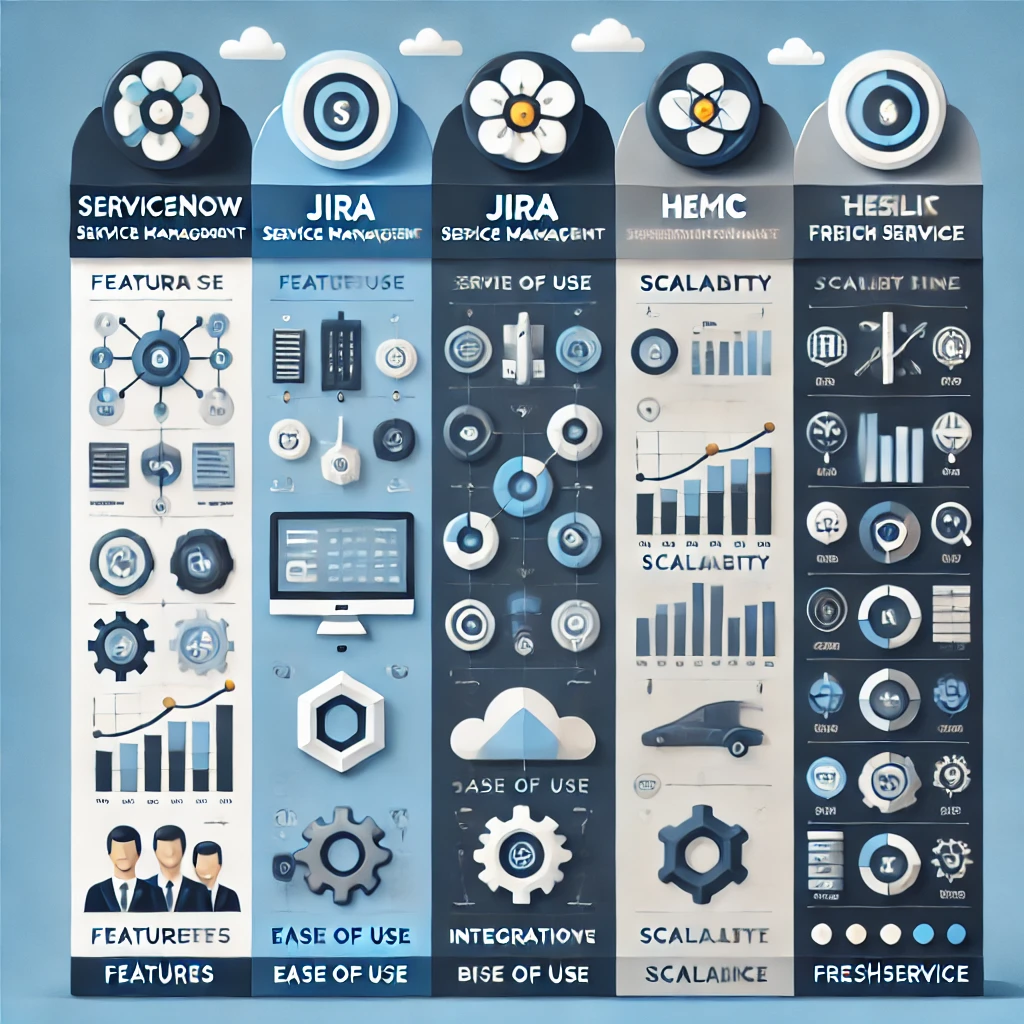
2. What does ITSM stand for?
ITSM stands for Information Technology Service Management. It refers to the process of designing, delivering, managing, and improving IT services to meet business needs.
3. What are the core modules of ServiceNow ITSM?
The core modules include:
- Incident Management
- Problem Management
- Change Management
- Request Management
- Knowledge Management
- Configuration Management Database (CMDB)
4. Is ServiceNow ITSM suitable for small businesses?
Yes, ServiceNow ITSM is scalable and can be tailored to suit businesses of all sizes, though its comprehensive features are particularly beneficial for medium to large enterprises.
5. What industries use ServiceNow ITSM?
Industries like healthcare, finance, retail, manufacturing, education, and government agencies commonly use ServiceNow ITSM for IT service management.
6. How does ServiceNow ITSM improve incident resolution?
ServiceNow ITSM automates ticket categorization and prioritization, facilitates collaboration between teams, and integrates SLAs to ensure timely resolution.
7. What is the role of automation in ServiceNow ITSM?
Automation in ServiceNow ITSM reduces manual workloads by automating repetitive tasks like ticket assignment, approval workflows, and notifications.
8. What is the CMDB in ServiceNow ITSM?
The Configuration Management Database (CMDB) is a repository that tracks IT assets and their relationships, providing a single source of truth for IT operations.
9. What is the difference between Incident Management and Problem Management?
- Incident Management focuses on resolving IT issues quickly to restore service.
- Problem Management identifies and addresses the root causes of recurring incidents to prevent future issues.
10. Does ServiceNow ITSM support ITIL practices?
Yes, ServiceNow ITSM is designed to align with ITIL (Information Technology Infrastructure Library) best practices.
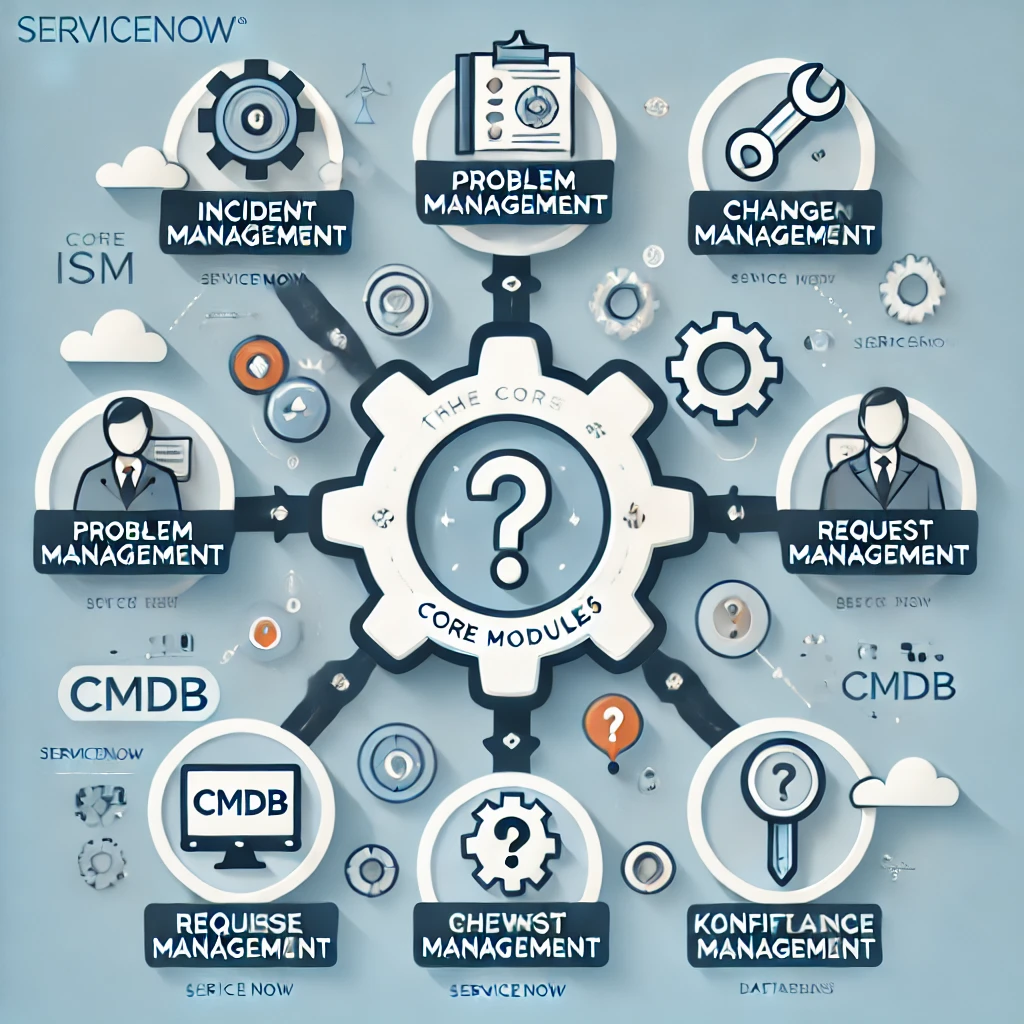
11. How is ServiceNow ITSM priced?
Pricing for ServiceNow ITSM varies depending on the modules, number of users, and customizations required. It is typically subscription-based.
12. What are the benefits of Knowledge Management in ServiceNow ITSM?
Knowledge Management empowers users and IT teams with access to a centralized repository of solutions, FAQs, and troubleshooting guides, reducing ticket volume.
13. Can ServiceNow ITSM integrate with other tools?
Yes, ServiceNow ITSM integrates with a wide range of third-party tools like Jira, Slack, Microsoft Teams, SolarWinds, and more.
14. How does ServiceNow ITSM support Change Management?
The Change Management module automates approval workflows, assesses risks, and provides a change calendar to minimize disruptions during IT changes.
15. What analytics does ServiceNow ITSM provide?
ServiceNow ITSM offers real-time dashboards and reports to track key metrics like incident resolution times, service request trends, and IT team performance.
16. Is training required to use ServiceNow ITSM?
Yes, while ServiceNow ITSM is user-friendly, training is recommended to help IT staff and end-users maximize its features.
17. What is the Service Catalog in ServiceNow ITSM?
The Service Catalog is a feature that allows users to submit requests for common IT services, such as software installation or hardware provisioning.
18. How does ServiceNow ITSM enhance user experience?
Self-service portals, AI-driven virtual agents, and faster resolutions contribute to improved user satisfaction.
19. What is the role of AI in ServiceNow ITSM?
AI in ServiceNow ITSM enables predictive analysis, virtual agents for user support, and automation of repetitive tasks, improving efficiency.
20. How does ServiceNow ITSM handle downtime?
Through proactive problem management and monitoring, ServiceNow ITSM minimizes downtime by addressing potential issues before they escalate.
21. Can ServiceNow ITSM be customized?
Yes, the platform is highly customizable to meet the specific needs of an organization, from workflows to user interfaces.
22. Does ServiceNow ITSM support mobile access?
Yes, ServiceNow ITSM offers a mobile-friendly interface and apps to ensure IT staff can manage services on the go.
23. What is the difference between ServiceNow ITSM and CSM?
- ITSM focuses on IT services and operations.
- CSM (Customer Service Management) addresses customer-facing services and support.
24. How long does it take to implement ServiceNow ITSM?
The implementation timeline varies based on organizational complexity and requirements, ranging from weeks to a few months.
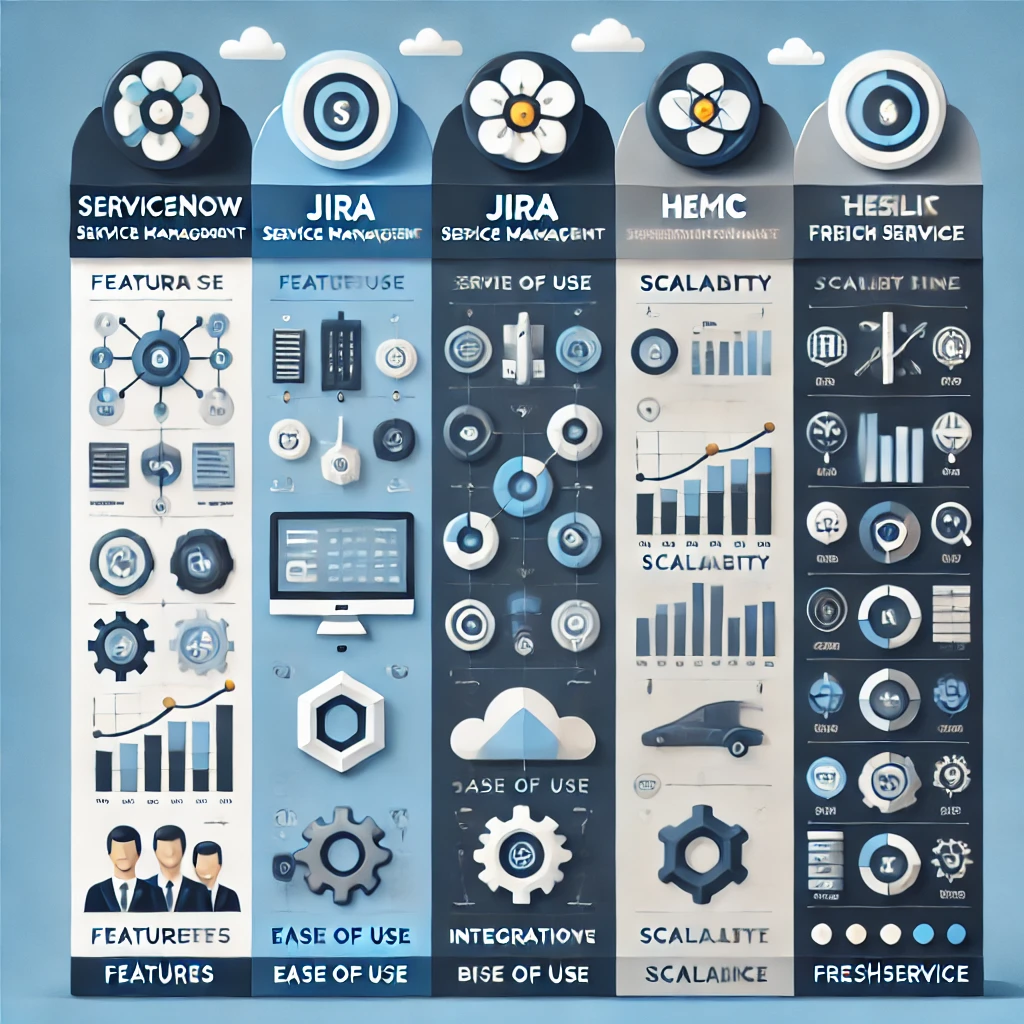
25. What kind of support does ServiceNow provide?
ServiceNow offers 24/7 technical support, community forums, and extensive documentation to assist users.
26. Can ServiceNow ITSM be used for non-IT departments?
Yes, ServiceNow ITSM’s workflows and automation can be adapted for HR, finance, and other business functions.
27. Is ServiceNow ITSM GDPR-compliant?
Yes, ServiceNow adheres to GDPR and other global data privacy standards.
28. What are the alternatives to ServiceNow ITSM?
Alternatives include Jira Service Management, BMC Helix, Freshservice, and Zendesk ITSM.
29. Can ServiceNow ITSM improve IT team productivity?
Yes, automation, collaboration tools, and streamlined workflows reduce manual workloads, enhancing productivity.
30. Why is ServiceNow ITSM considered an industry leader?
ServiceNow ITSM stands out due to its comprehensive features, scalability, AI-driven tools, and alignment with ITIL best practices, making it a preferred choice for enterprises worldwide.
These FAQs provide a comprehensive overview of ServiceNow ITSM and address common questions organizations may have. If you have more questions, feel free to reach out or explore ServiceNow’s extensive documentation and community resources.
Keep us going with the cost of a cup of coffee—it’s a small gesture that brews big impact!
Affiliate Disclosure
This article may contain affiliate links, which means we may earn a commission if you make a purchase or sign up for a service through one of our links. This comes at no additional cost to you and helps support the maintenance and creation of valuable content on this website.
We only recommend products and services that we genuinely believe will bring value to our readers. Our opinions and recommendations are unbiased and based on thorough research and expertise. Thank you for supporting us!



